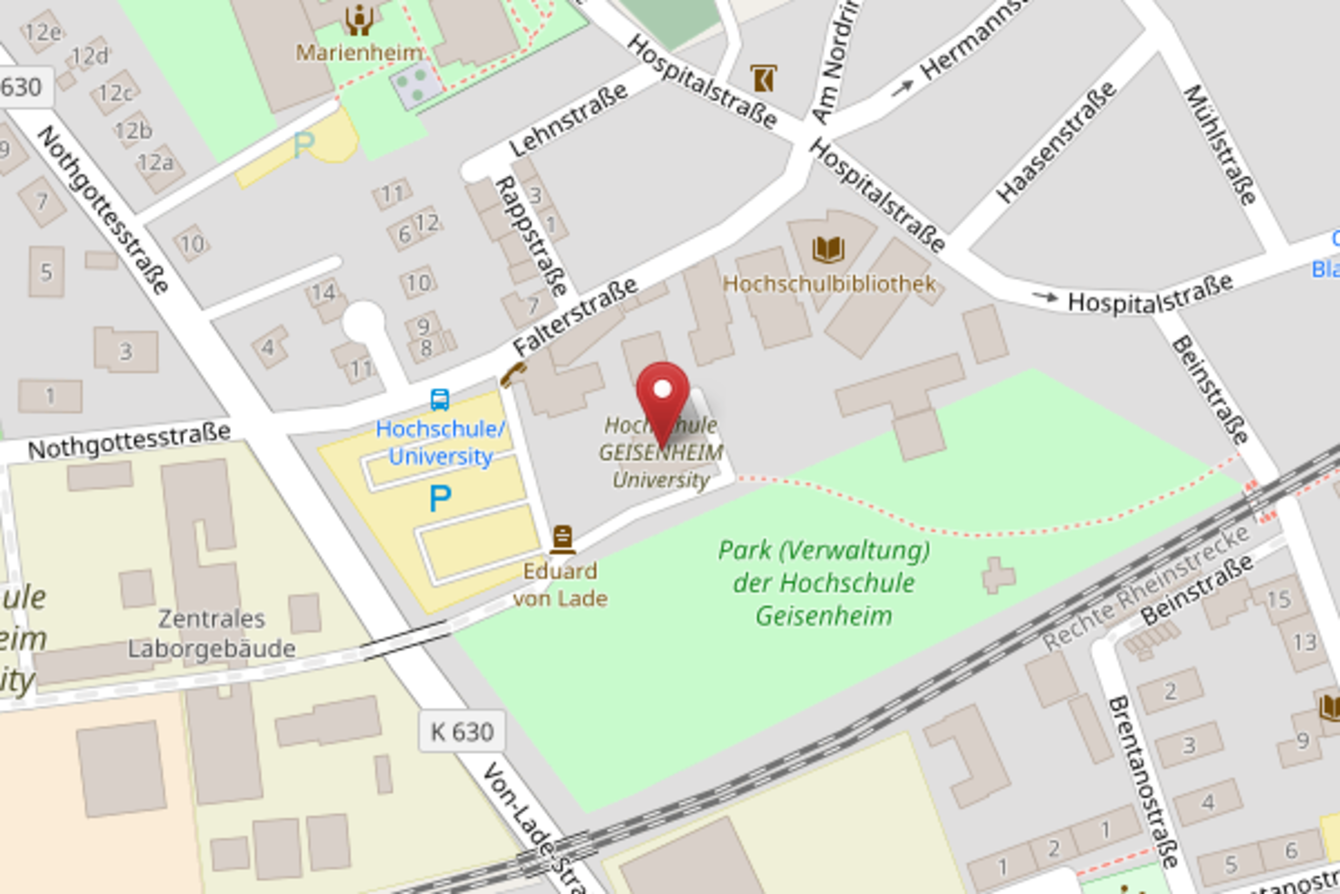In fruit and wine growing, agrivoltaic systems can provide additional benefits by shielding crops from adverse weather conditions such as hailstorms. They can also reduce evapotranspiration, mitigate the effects of late frosts, and prevent fruit damage caused by sunburn. In addition, solar panels can reduce the level of humidity of the canopies underneath, making them less susceptible to pests and helping to reduce the use of pesticides.
At Hochschule Geisenheim University, a first agrivoltaic plant was established (“VitiVoltaic”) with financial support from the European Regional Development Fund. Viticultural research is funded by the Hessian Ministry of the Environment.
Because of the support structure, which can usually be completely removed, an agrivoltaic plant is more expensive than a ground-mounted system of the same capacity, but enables the dual use of land by allowing crops to be grown underneath the panels.
In a position paper based on the latest amendment of the Renewable Energy Sources Act (EEG 2023), the AG Begleitforschung Agri-Photovoltaik (agri-photovoltaic accompanying research group) has closely examined the conditions for a market roll-out of agrivoltaic systems and identified weaknesses.
For example, the group doubts that the available funding of 1.2 cents per kWh is going to create adequate incentives to encourage the widespread installation of overhead agrivoltaic systems, especially in light of rising steel prices.
In addition, funding is only available for overhead systems that are subject to tendering. Small systems (< 1 MWp) that are not subject to tendering as well as community energy systems (< 6 MWp) are not eligible. For comparison: the Geisenheim system covers an area of approximately 1650 m² with a capacity of 96 KWp. Especially in viticulture, winegrowers rarely own larger plots of land, which is partly due to historical reasons and inheritance laws. As a consequence, the current funding approach disadvantages normal-sized agricultural businesses that grow special crops, and public support for agrivoltaics is likely to suffer as a result. The working group, therefore recommends a new funding approach.
Another obstacle preventing the widespread installation of agrivoltaic systems is the current legislation which includes a lengthy approval process. For example, a project-specific development plan must be drawn up first, which often requires prior changes to the zoning plan. In the case of the Geisenheim plant, this (expensive) process took almost 2.5 years. Digitizing the administrative processes could speed up the approval process. The working group also recommends to classify smaller plants (< 1 MWp) that serve a clear agricultural/ horticultural production purpose as special status projects under Section 35 BauGB (German Federal Building Code) in order to strengthen public backing.
AG Begleitforschung Agri-PV Spokespersons: Max Trommsdorff, Fraunhofer Institute for Solar Energy Systems ISE and Claudia Kammann, Hochschule Geisenheim University.
We would like to thank the European Regional Development Fund for financing the construction of the “VitiVoltaic” plant and the Hessian Ministry of the Environment for their research funding.

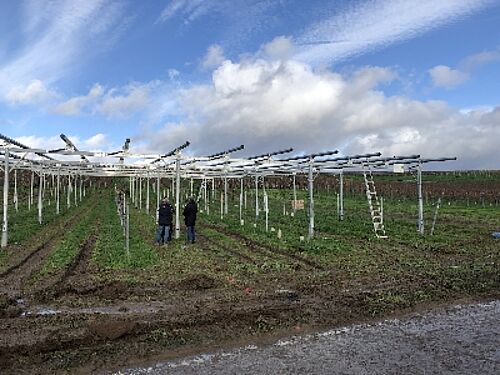
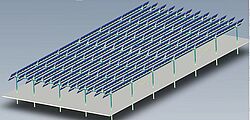
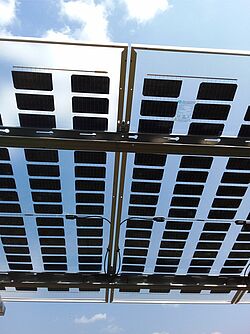


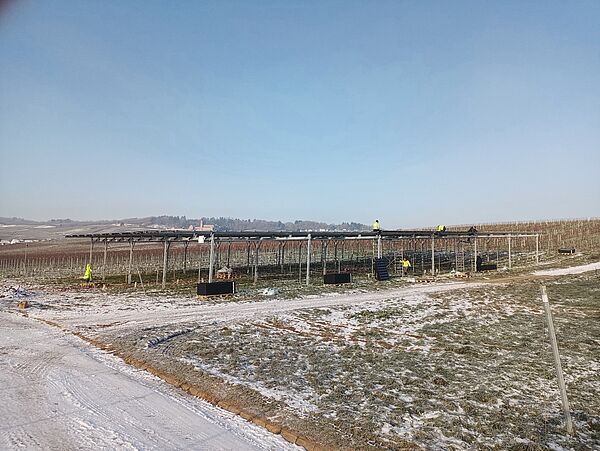
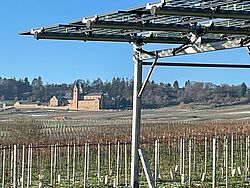
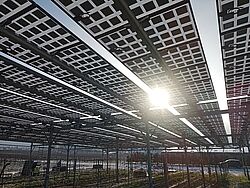
![[Translate to English:] [Translate to English:]](/fileadmin/_processed_/7/7/csm_EFRE_Foerderhinweis_deutsch_farbig_d74828baa5.jpg)
![[Translate to English:] [Translate to English:]](/fileadmin/_processed_/f/3/csm_HMUKLV_Foerderhinweis_a0156ca349.jpg)





